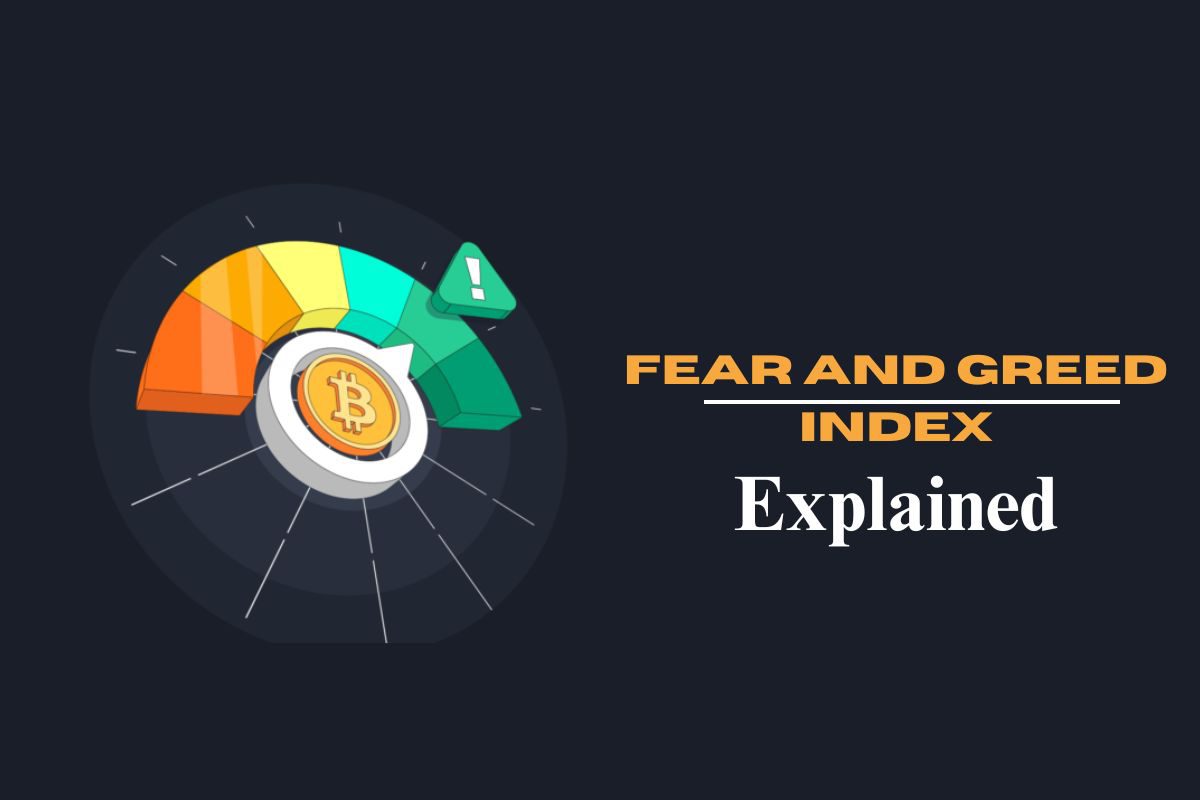Introduction to Cryptocurrency Trends
The world of cryptocurrency has undergone significant transformations since its inception, establishing itself as a pivotal player in the global financial landscape. As digital currencies continue to gain traction, recognizing and understanding the latest trends in cryptocurrency becomes essential for investors and enthusiasts. The market has expanded from the original Bitcoin to a plethora of altcoins, blockchain technologies, and decentralized finance (DeFi) platforms, each contributing to the evolving narrative of digital assets.
Staying informed about these trends is crucial for several reasons. First, the volatility associated with cryptocurrencies often results in swift market movements that can significantly impact investment decisions. An astute investor who understands current trends in cryptocurrency can better navigate these fluctuations and capitalize on opportunities. Moreover, as regulatory frameworks around cryptocurrency continue to develop, being aware of these changes is vital, as they can influence market dynamics and investment potential.
Over the years, the evolution of cryptocurrency has been propelled by technological advancements, increased mainstream acceptance, and the ongoing exploration of innovative use cases. This has led to newer trends, such as the rise of non-fungible tokens (NFTs), the integration of artificial intelligence in trading algorithms, and the growing interest in sustainability efforts within the cryptocurrency mining sector. Each of these trends holds significant implications for the future of cryptocurrency, making it imperative for stakeholders to remain vigilant.
In conclusion, the cryptocurrency arena is in a constant state of flux, driven by technological, regulatory, and societal changes. Understanding these trends not only enhances the knowledge base of investors but also fosters better decision-making in leveraging the vast potentials of cryptocurrencies while mitigating associated risks.
Market Overview: Current State of Cryptocurrency Values
The cryptocurrency market is known for its volatility, and recent months have highlighted this characteristic with significant fluctuations in values. As of October 2023, Bitcoin remains the leading cryptocurrency by market capitalization, with its value hovering around $40,000. Ethereum follows closely, maintaining a solid position at approximately $2,800. These two cryptocurrencies continue to dominate the market, but interest in alternative cryptos (altcoins) has surged, resulting in notable growth across various digital assets.
Among the top performers in the current landscape are Solana and Cardano, both of which have shown promising increases. Solana, with its cutting-edge technology and fast transaction speeds, recently reached a valuation of $100, while Cardano has experienced a steady rise, currently valued at around $1.20. Such advancements contribute to the evolving sentiment in the cryptocurrency community, where both investor confidence and market enthusiasm play a crucial role in price determination.
Market sentiment surrounding cryptocurrencies is influenced by multiple factors, including regulatory updates, technological developments, and macroeconomic trends. For instance, the announcement of favorable regulations in key markets has led to an uptick in investment, thus propelling prices higher. Conversely, negative news, such as crackdowns in major economies or cybersecurity breaches, can lead to rapid downturns. Understanding these market dynamics is essential for potential investors and stakeholders looking to navigate the ever-changing environment of cryptocurrencies.
In recent weeks, the rise of decentralized finance (DeFi) and non-fungible tokens (NFTs) has also spurred interest, further diversifying investment strategies. Overall, the cryptocurrency market presents both opportunities and risks, making it vital for participants to stay informed about current values and sentiment to make educated investment decisions.
Regulatory Developments Impacting Cryptocurrency
The landscape of cryptocurrency is heavily shaped by regulatory developments, which can vary significantly from one country to another. Recently, several nations have taken notable steps toward establishing clearer legal frameworks for the use and trading of cryptocurrencies. For instance, the U.S. Securities and Exchange Commission (SEC) has ramped up its scrutiny of digital assets, often classifying cryptocurrencies as securities. This classification brings them under strict regulations that impact how initial coin offerings (ICOs) can be conducted and how those assets can be traded, posing challenges for startups and investors alike.
In Europe, regulatory bodies have been proactive in drafting the Markets in Crypto-Assets (MiCA) framework, aimed at creating a comprehensive regulatory environment for cryptocurrencies and stablecoins. This legislative proposal seeks to ensure consumer protection, mitigate risks, and foster innovation while maintaining financial stability. The MiCA framework intends to establish clear definitions and categories for various cryptocurrencies, making it easier for businesses to navigate compliance.
Furthermore, developments in Asia reflect a similar trend towards regulation. Countries such as Japan have implemented comprehensive laws governing cryptocurrency exchanges, which not only require licenses but also enforce anti-money laundering (AML) and know your customer (KYC) protocols to ensure transparency. Meanwhile, China has taken a starkly different approach by enforcing strict bans on cryptocurrency trading and mining activities, citing concerns over financial stability and environmental impact.
Overall, these regulatory changes are significant for users and businesses in the blockchain space. They not only define the operational framework for cryptocurrency transactions but also influence market dynamics, investor trust, and innovation. As governments around the world continue to respond to the emerging cryptocurrency environment, adaptability and awareness of these regulations remain crucial for stakeholders in the industry.
Emerging Cryptocurrencies to Watch
As the cryptocurrency landscape continues to evolve, several emerging cryptocurrencies are garnering attention from investors and enthusiasts alike. Among them, Solana (SOL) stands out due to its impressive transaction speeds and lower costs compared to established networks like Ethereum. Solana utilizes a unique consensus mechanism called proof-of-history, which enhances its scalability and allows for rapid processing of thousands of transactions per second. This has made it appealing for developers looking to build decentralized applications and NFT platforms.
Cardano (ADA) is another cryptocurrency worth monitoring. Renowned for its research-driven approach, Cardano focuses on sustainability and scalability. Its layered architecture allows for greater flexibility in executing smart contracts while prioritizing security. Given its community-driven development model and emphasis on compliance, Cardano has attracted institutional interest, which may drive its long-term growth.
Additionally, Polkadot (DOT) is making waves by enabling different blockchains to interoperate, fostering a multi-chain ecosystem. This unique interoperability is a crucial feature as it allows it to address various applications while promoting innovative solutions across diverse networks. Investors are intrigued by its ability to bring various blockchain technologies together, creating synergies that may continuously improve the overall functionality of each chain.
However, investing in emerging cryptocurrencies carries inherent risks. The volatility of these assets is significant, and their success is not guaranteed. Factors like regulatory scrutiny, market acceptance, and competition from other cryptocurrencies can influence their future performance. Therefore, it is essential for potential investors to conduct thorough research and consider their risk tolerance before committing to these emerging assets.
Technological Innovations in Blockchain
Recent advancements in blockchain technology have positioned it as a cornerstone for innovation within the cryptocurrency space. One major trend has been the emergence of Layer 2 scaling solutions, such as the Lightning Network for Bitcoin and zk-Rollups for Ethereum. These technologies enable faster transactions and reduced fees by processing a majority of transactions off-chain while maintaining a secure connection to the main blockchain. As a result, they enhance scalability and could significantly improve user experience, especially during peak transaction times.
Moreover, interoperability has gained traction as a critical focus area for contemporary blockchain projects. Protocols like Polkadot and Cosmos aim to allow different blockchain networks to communicate with each other seamlessly. This interoperability facilitates a broader range of applications, enabling users to benefit from the unique features of various blockchain platforms without being tethered to a single ecosystem. These advancements broaden the appeal of cryptocurrencies by fostering a more inclusive and interconnected digital finance landscape.
An additional innovative stride has been made with decentralized finance (DeFi) applications leveraging smart contracts. These programmable contracts automate and execute transactions without the need for intermediaries, thereby enhancing security and transparency in various financial operations. The rise of DeFi has resulted in increased liquidity and diverse financial products, providing users with an array of investment options that were previously unavailable outside traditional finance.
As these technological innovations unfold, they signify an overall maturation in blockchain systems, often leading to enhanced security features and more efficient consensus mechanisms. Bitcoin’s Taproot upgrade and Ethereum’s transition to Proof of Stake exemplify such enhancements. With continuous developments in blockchain technology, the promise of cryptocurrency transactions being more secure, scalable, and user-friendly is on the horizon.
Market Sentiment and Influencer Impact
Market sentiment plays a crucial role in the cryptocurrency landscape, significantly influencing investor behavior and price movements. In recent years, the advent of social media platforms has amplified the voice of both supporters and critics of cryptocurrencies. Influencers, from social media personalities to prominent financial analysts, are capable of swaying public opinion with their endorsements or criticisms. These digital platforms provide a rapid dissemination of information, which can lead to either a surge of enthusiasm around a particular currency or widespread skepticism.
The rise of platforms like Twitter and Reddit has enabled investors and enthusiasts to participate in discussions that can impact market trends on a daily basis. For instance, when a well-known influencer posts a favorable opinion about Bitcoin or Ethereum, it can lead to an instant increase in investor interest and market activity. Conversely, negative comments from respected figures can prompt fear and lead to sell-offs. Hence, understanding the dynamics of market sentiment is essential for anyone involved in cryptocurrency investments.
Moreover, market sentiment is not solely influenced by individual opinions; rather, it is shaped by collective behavior and broader economic narratives. The interconnected nature of information today means that market trends can change rapidly, driven by memes, tweets, and news articles. Observing fluctuations in social media sentiment can provide valuable insights for investors seeking to navigate the volatile nature of cryptocurrency markets. Thus, staying informed and engaged with the influencers and public narratives surrounding various cryptocurrencies is vital for understanding how these elements affect overall market trends and investor confidence.
Investment Strategies for Today’s Market
In the ever-evolving cryptocurrency market, implementing effective investment strategies is crucial for minimizing risk and maximizing potential returns. Investors must be well-informed about various approaches to navigate the complexities of digital assets. One effective strategy is dollar-cost averaging (DCA), which involves regularly investing a fixed amount in cryptocurrencies regardless of market conditions. This method helps mitigate the impact of market volatility, allowing investors to accumulate assets over time at a lower average cost.
Another key aspect of investing in cryptocurrencies is portfolio diversification. Investors should spread their capital across a range of cryptocurrency assets to reduce exposure to any single asset’s volatility. This can include a mix of established cryptocurrencies such as Bitcoin and Ethereum, along with promising altcoins that may have growth potential. Balancing the portfolio with stablecoins can also provide a buffer during market downturns, offering a low-risk option for holding funds.
Risk management is equally important when investing in cryptocurrencies. Setting clear investment goals, determining the amount of risk one is willing to take, and establishing stop-loss orders are essential practices. A stop-loss order automatically sells an asset when it reaches a predetermined price, helping to limit potential losses. Furthermore, it is advisable to remain informed about market trends, regulatory changes, and technological advancements within the cryptocurrency space.
Lastly, one should consider employing a well-researched approach when selecting exchanges and wallets. Utilizing reputable platforms ensures that investors have access to reliable tools for trading and managing their portfolios. As the cryptocurrency ecosystem continues to expand, staying educated and adapting investment strategies to current market conditions is key for both novice and experienced investors. By implementing these practical strategies, one can increase the likelihood of achieving investment success in today’s dynamic cryptocurrency market.
Real-World Use Cases for Cryptocurrencies
Cryptocurrencies and blockchain technology have transcended their origins as mere financial instruments, emerging as pivotal elements in various industries. A growing number of businesses are recognizing the potential of these digital currencies to increase efficiency, transparency, and innovation in their operations. One notable real-world application of cryptocurrencies is in the realm of cross-border payments. Traditional methods often accompany delays and high fees; however, utilizing cryptocurrencies significantly reduces transaction time and costs, allowing businesses to transact globally with ease.
Moreover, industries such as supply chain management are reaping the benefits of blockchain technology to provide greater transparency. By tracking goods in real-time via decentralized ledgers, companies can enhance accountability, reduce fraud, and ensure quality control. This ability not only improves operational efficiency but also fosters consumer trust in the products they purchase. Another sector witnessing transformative change is healthcare. Cryptocurrencies can facilitate secure, swift transactions for medical services while preserving patient privacy through encrypted health records stored on blockchain platforms.
Additionally, in the realm of decentralized finance (DeFi), cryptocurrencies are reshaping the traditional banking landscape. Consumers can engage in lending, investing, and trading outside conventional banking systems, gaining unprecedented access to financial services. This shift empowers individuals in underbanked regions, promoting greater financial inclusion. Similarly, the entertainment industry is exploring the use of non-fungible tokens (NFTs) to represent ownership of digital assets, enabling artists to monetize their creative work in novel ways.
Overall, the integration of cryptocurrencies and blockchain technology into diverse sectors showcases their profound potential to enhance operational efficiency and foster innovation. As these real-world use cases continue to unfold, it is clear that cryptocurrencies are not only reshaping financial systems but also creating value across various domains.
Conclusion: The Future of Cryptocurrency
In light of the rapid evolution observed within the cryptocurrency landscape, it is essential to recognize both the potential challenges and opportunities that lie ahead. As digital currencies continue to gain prominence, regulatory frameworks are expected to adapt, paving the way for a more structured market. Governments and financial institutions worldwide are gradually embracing the technology behind cryptocurrencies, which could lead to wider acceptance and integration into traditional financial systems.
One of the significant challenges faced by cryptocurrency enthusiasts includes navigating regulatory hurdles. As authorities design regulations to combat issues such as money laundering and fraud, the decentralized nature of cryptocurrencies may hinder seamless compliance. Moreover, concerns regarding cybersecurity continue to loom large. The increase in hacking incidents and security breaches within the crypto realm has highlighted the necessity for enhanced security protocols and user education.
On the other hand, opportunities abound for innovation in the cryptocurrency space. The rise of decentralized finance (DeFi) showcases how blockchain technology can empower users to access financial services without intermediaries. This shift not only democratizes financial access but also presents tremendous growth potential for many emerging cryptocurrencies. Furthermore, the continued expansion of non-fungible tokens (NFTs) signifies a growing recognition of digital ownership and value, creating new markets and revenue streams.
Looking ahead, its crucial for investors, developers, and enthusiasts to stay informed about market trends and technological advancements. As cryptocurrencies become more mainstream, strategic adaptability will be paramount. The future of cryptocurrency will depend on how it addresses compliance, security, and functionality within an increasingly interconnected world. By embracing these changes and remaining vigilant to the evolving landscape, stakeholders can better navigate the complexities of this dynamic market.

Mike Neon is a seasoned journalist specializing in United States news, known for his comprehensive coverage of national affairs and current events. With a career spanning 5 years in journalism, Mike has established himself as a reliable source of accurate and insightful reporting. His articles delve deep into political developments, social issues, and cultural trends shaping the United States today. Mike Neon’s dedication to providing balanced perspectives and in-depth analysis ensures that readers stay informed about the latest developments that impact the nation.








